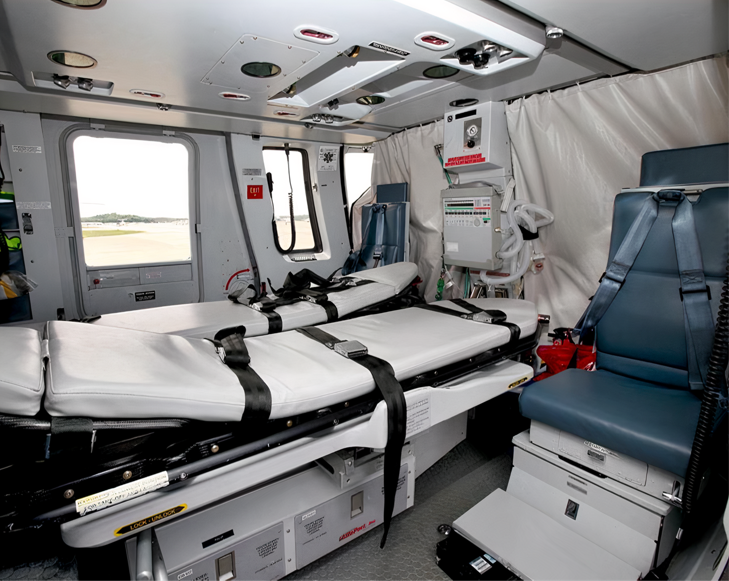Every day, air ambulances are deployed across the country to transport patients following car accidents, structure fires, natural disasters, and so forth. These air ambulances are equipped with litter systems designed from the ground up to keep patients safe during transport.
Litter systems are a big part of what we do here at LifePort. We understand our responsibility to design and build reliable litter systems that do not compromise. Patient safety is paramount.
Intentional Engineering
Given the nature of air ambulance services, litter systems are intentionally engineered to protect patients. For example, they are designed with multiple layers of safety features. They are engineered according to protocols dictating patient safety during aerial medical transport.
Such intentional engineering may seem like excess given the relatively safe nature of passenger air travel. But transporting patients facing critical health challenges is a far cry from boarding a commercial jet and heading off to a vacation destination. Fragile patients need more. They need safe and secure transport that will not jeopardize their health any further.
5 Engineering Challenges
As a manufacturer supplying helicopter emergency medical services (HEMS) and fixed wing air ambulance providers, we face challenges in designing litter systems that meet the most rigorous standards but still accommodate aircraft variations. Below are five such challenges. How we meet them demonstrates exactly how litter systems keep patients safe.
1. Patient Immobilization
Above all else, patients must remain secure and immobile during transport. Litter systems are designed to do just that. Patient movement is minimized throughout flight, even in turbulence. Complete immobilization greatly reduces the risks of further injury, which is of the highest importance when critical trauma patients are being transported.
2. Medical Equipment Integration
Patient transport often requires advanced life support techniques. Thus, litter systems must be able to integrate with medical equipment. They need to be compatible with cardiac monitors, ventilators, infusion pumps, and so forth. In essence, a litter system becomes part of an airborne intensive care unit.
3. Personnel Accommodations
Every air ambulance flight is crewed by medical personnel tasked with monitoring and caring for the patient. Litter systems must be designed to keep patients secure while still giving medical personnel complete access. This is often a tricky proposition given the confined spaces we are dealing with. Nonetheless, medical personnel may need to provide additional lifesaving care in-flight. They cannot be inhibited by a litter system.
4. Infection Control
From time to time, an air ambulance service might be called on to transport patients with infectious diseases. In such cases, a specialized litter system engineered as an isolation unit is called for. Most standard litter systems can be integrated with isolation units that protect both patient and crew during flight.
5. Environmental Controls
Medical transport aircraft come equipped with advanced systems that control everything from ventilation to temperature and humidity. In addition, they must provide onboard oxygen systems and ventilation for patients dealing with respiratory issues. Once again, litter systems need to accommodate any such equipment without inhibiting patient safety or crew access.
It goes without saying that air ambulance services are subject to strict standards. They must be licensed, accredited, and compliant with all safety protocols. They expect the litter systems they install on an aircraft to meet the same rigorous standards.
We do what we do because we are committed to patient safety. Engineering a litter system that exceeds all safety and technical requirements is challenging, but we don't consider it a burden. We are honored to be able to design and build lifesaving systems that air ambulances and their patients depend on.







